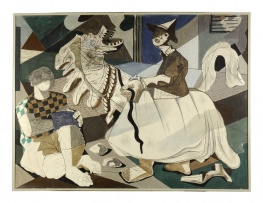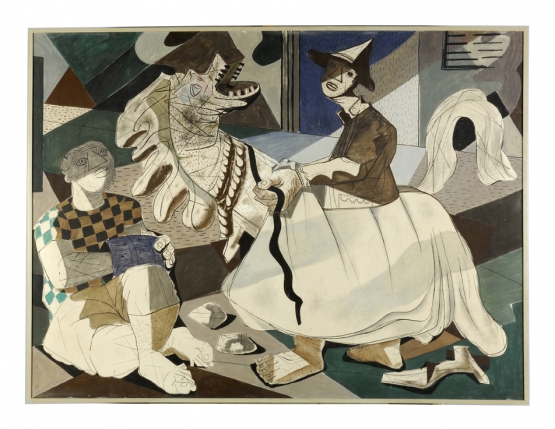The works presented in this exhibition were part of a set of eight musically-themed panels by Cândido Portinari (Brodowsqui, S. Paulo, 1903 - Rio de Janeiro, 1962) that were commissioned to decorate Radio Tupi in Rio de Janeiro in 1942. After a fire in its auditorium in 1949, in 1951 Assis Chateaubriand, one of the owners of the radio station, donated these two works to the MNAC and MNSR through his company Diários Associados.
Rarely exhibited, these pieces featuring popular themes are suggestive of the Ibero-American brotherhood and the ethnic diversity of the Brazilian people and their musical culture. Chorinho is a genre of popular music and a way of playing. Cavalo-marinho is a festive representation of recited narratives. Both feature geometrically constructed backgrounds and compositions with flatteded volumes, undercut by shadows, lines and planes. Picassian references are apparent in the reduced colour palette, featuring compelling blues and browns.
Considered the most popular painter in Brazil (Mário Dionísio, 1963), the modernism of Portinari is both original and classical, a form of “aesthetic nationalism” (Mário de Andrade) achieved through expressive deformations of figures and an “optimism” based on the work’s heroic and affirmative qualities. Portinari thus stands out as a social painter and official artist. Examining the nation’s roots, he constructs a mythical Brazilian figure that nevertheless departs from the ideology of the Estado Novo. He links social painting to visual communication, underlining the importance of gesture in a realism that is dramatised in this case by popular music and narrative. His hand and discerning eye trace an original course, captured in the poem by Carlos Drummond de Andrade as The blue-eyed hand.











